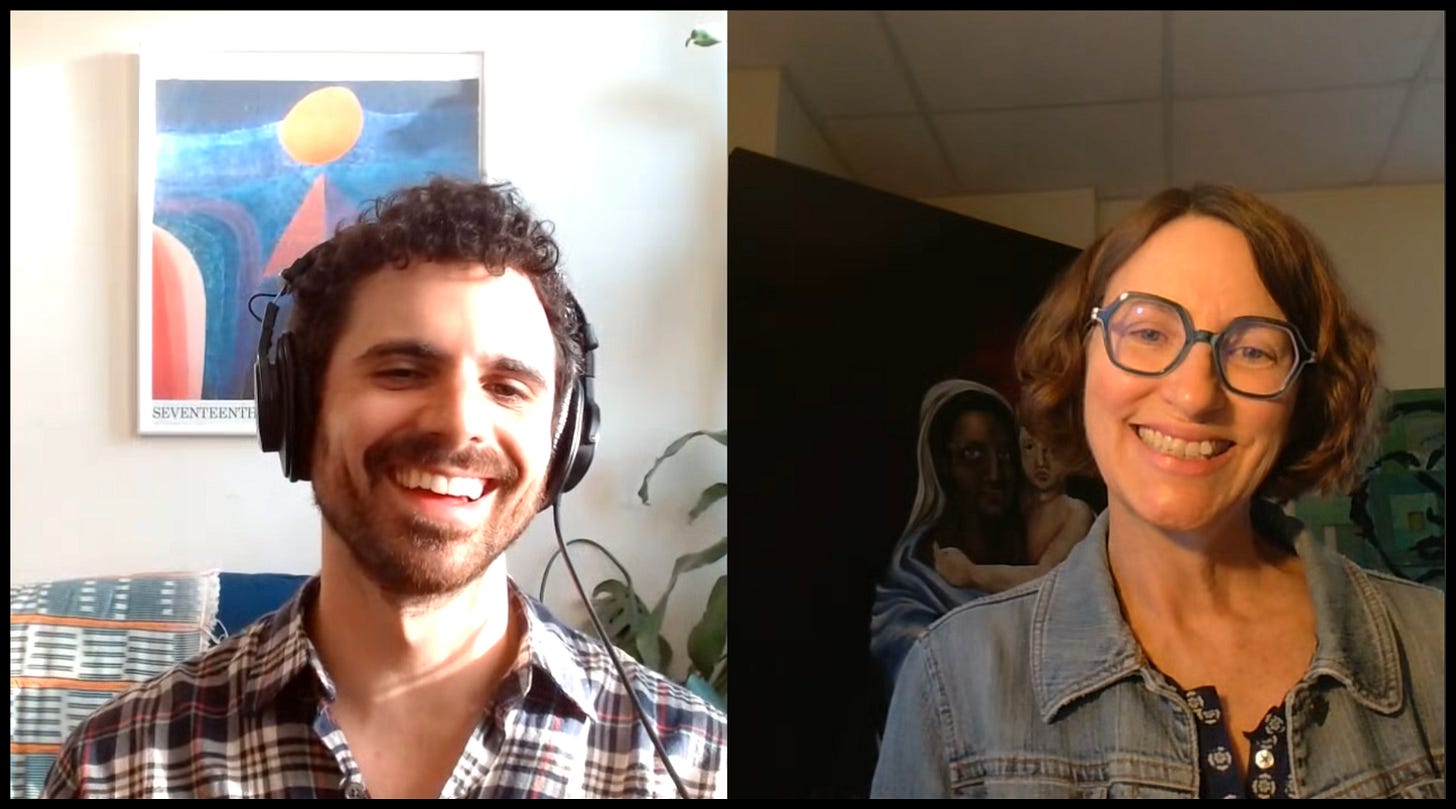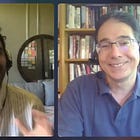Ahead of Thanksgiving, I spoke with Professor Anne Blue Wills about the invention of the holiday as we know it today. In her article, “Pilgrims and Progress: How Magazines Made Thanksgiving,” and in conversation, Professor Wills chronicles how nineteenth-century women’s magazines —and one magazine editor in particular — created contemporary Thanksgiving.
Professor Wills is professor and chair of religious studies at Davidson College. A condensed transcript edited for clarity is below. You can also listen to the audio version of our conversation:
The Invention of Contemporary Thanksgiving
Listen now (32 mins) | Audio of my conversation with Professor Wills.
Ben: Today I’d like to trace the origins of contemporary Thanksgiving, many of which lead back to one person: Sarah Josepha Hale. To start us off, could you please give a little background on who Hale was?
ABW: Sarah Hale was a magazine editor born in 1788 in New Hampshire. She later met and married her husband there, and together, they had five children. When her husband died unexpectedly in 1822, Hale began writing to support her family, ultimately coming to the attention of a publisher named Louis Antoine Godey.
Godey brought Hale to Boston to edit his magazine, Godey's Lady's Book. She proceeded to be the editor for about 40 years, almost until she died in 1879. Hale proved phenomenally good at her job, and through Godey’s, she dominated the American periodical landscape during the nineteenth century.
A handful of women’s magazines began talking about Thanksgiving in the 1840s, but Hale argued for Thanskgiving’s celebration most fervently of all.
Ben: To that point, there wasn’t yet a national Thanksgiving holiday. In fact, as we’ve explored on Skipped History before, few people celebrated Thanksgiving at all.
Why did Hale help invent the tradition in the 1840s?
ABW: Well, broadly speaking, the American scene was changing.
On one hand, there was a steady flow of immigration from Europe. Many of the immigrants were Catholic, which really concerned Hale. She was fairly conservative, and as she understood it, America was founded on a Protestant vision of order in society, which Catholic immigration threatened to upend.
The more Catholics there were, the more she worried the complexion of the country would change. Hale wanted to firmly establish the white Protestant culture of the Northeast as the defining ethos of the U.S. Trumpeting the pilgrims as founders of America and celebrating them on Thanksgiving was a clear way of doing that.
Ben: In your article, you discuss how the actual Pilgrims wouldn’t have recognized the concept of an annual Thanksgiving meal.
ABW: That’s right.
Puritan communities in Massachusetts Bay or Plymouth, the site of the “first Thanksgiving,” would’ve found a set day in the calendar for Thanksgiving to be very presumptuous. They were always on the lookout for signs of God’s will. If something good happened, they’d hold an impromptu day of thanksgiving. If something bad happened, they’d read it as a sign of God’s chastisement, and they’d hold a day of mourning or repentance.
Hale, on the other hand, argued for an annual Thanksgiving holiday, motivated in large part by nativist concerns. She also wanted to push back against the growing women’s suffrage movement — naturally, her strong views about a proper, patriarchal order of society extended to women, too. Hale thought that white women were meant to be mothers and gatekeepers to the home. (Not unrelated, Hale expressed appreciation for the racial hierarchies of the South.)
So the annual Thanksgiving meal that she pioneered was both a celebration of white Protestants and also a time for the woman of the household to display her skill as a cook; to demonstrate that she was someone who stayed home and kept a home in a way that was welcoming.
Ben: So Hale’s concerns about immigration, combined with her views of women’s proper, domestic place in society, led her to invent the tradition of a Thanksgiving feast at home.
ABW: And through Godey’s, each November, Hale taught women how to prepare the meal.
Ben: You detail how she advised women to prepare oysters, soups, turkey, ham, roast beef, chicken pie, rice, potatoes, cranberries, macaroni, numerous pies and cakes, fruit, and coffee, among other things.
In fact, Hale believed a successful Thanksgiving meal was a tribute to the “artistry” of the housewife who, in her words, “would probably have the power to serve a lovely dinner, even in the midst of a forest.” Her prediction raises a question: if no one attends a lovely dinner in the middle of the forest, did it even happen?
ABW: Ha! You know, when I first researched this history and read Hale’s quotations, Martha Stewart was on the ascendant. Stewart was teaching people to do the kind of homey crafting and cooking that Hale also supported. I thought, there’s really nothing new under the sun.
Editor’s note: to learn what was actually eaten at the “first Thanksgiving,” check out an interview from last year…
Ben: Clearly, Hale’s ideas about Thanksgiving spread and stuck. How did they first take hold?
ABW: Well, Godey’s was incredibly popular, mixing stories, recipes, and columns, often written by Hale herself. Beginning in the 1840s, and for decades following, Hale wrote about establishing an annual national Thanksgiving in the calendar. She wanted everybody in the country to be doing the same thing on the same day.
Ben: Specifically, on a Thursday.
ABW: Yes. She argued Thursday was the “most convenient day of the week” for the celebration because then women would still have time to prepare dinner for Sunday.
Ben: I suppose having leftovers on Sunday didn’t qualify.
ABW: Ha, no.
And people began to write back to her, reporting that they were following her instructions. In turn, Hale let her readers know there was a new trend. Didn’t they want to participate, too? Of course, all of it was based on myth.
Notably, as part of the new tradition, Hale also insisted that celebrants travel home to be with their families. To that point, many Americans had lived with their families, but as railroads grew and cities industrialized, more and more people left home for work in places like Philadelphia, New York, and Boston. In Hale’s Thanksgiving, people had to travel home; to a protective cocoon safe from cities.
All of these different dynamics — shifting views of women’s roles, increasing immigration, and industrialization — contributed to Hale’s idea of a Thanksgiving dinner. She badgered national leaders to add Thanksgiving to the calendar of national celebrations until Abraham Lincoln finally issued the first nationwide declaration of Thanksgiving in 1863.
Ben: In sum, you argue that contemporary Thanksgiving, “traveling home to turkey and all the trimmings,” was invented not in Plymouth in the 1620s, but over two hundred years later in “the pages of the nation’s most widely circulated magazines and in response to the changing American scene.”
How do you reflect on the invention of Thanksgiving today? Hale’s motivations are troubling, and we haven’t even touched on how much Indigenous history, resistance, and suffering the holiday obscures.
ABW: Absolutely. Honestly, I grew up loving the holiday. I still love the colors, the flavors, and that there’s little to do but eat. I like that there are no fireworks to scare my dog.
But I have a lot of heartache. In Sarah Hale’s view, it was providence that white Europeans came to the “New World” and established “civilization” on this continent. I mean, what more do you need to know?
So I’m not sure what will happen to the holiday — if one day we’ll view it like Columbus Day, for example — but I think about the question a lot.
Ben: Well, Professor Wills, thanks for raising the question and speaking with me today. It’s been a pleasure.
ABW: Thank you for your hospitality!






